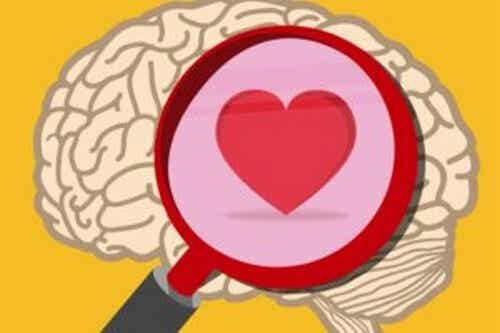Who has never experienced fear at least once in their life? But what is its function? Is fear really good for anything? It would seem so, much more than you might think. We talk about it in this space.

Last update: October 01, 2020
Fear (or dread) is one of the six main emotions (joy, sadness, disgust, anger, fear, surprise) described by Charles Darwin in 1872, each with its own gestures: open eyes, trembling mouth and a feeling of perplexity. But what is fear for?
Even if we all feel this emotion in the course of our life, many are not very clear about its function - if it exists - and what message it wants to convey to us. Because what would become of us if there was no fear? Could we ever live a life devoid of this emotion? Let's find out together!
What is fear?
Every emotion has a purpose. Anger helps to identify the limits not to be crossed, surprise to recognize and discover, joy leads to sharing, disgust to reject, sadness to reflect and… what is fear for? It helps protect us from danger.
Fear as such can be defined, according to the Treccani dictionary, as · an emotional state consisting of a feeling of insecurity, loss and anxiety ·. This word comes from the Latin pavor which has a similar meaning and several terms are associated with it, such as "fright, alert, fear, suspicion, apprehension, danger, terror, horror, sandwich, phobia, shock".
Feeling fear, therefore, is a congenital biological response that it gives the possibility of developing a defense reaction in the face of danger.
It is a genetic characteristic shaped by centuries of evolution and which helps us, thanks to a rapid and automatic response, to protect us from threatening situations and potential danger, that is, it allows our survival.
It is an intense unpleasant sensation caused by the perception of a danger (real or imaginary) which occurs in all animals.
What is fear for?
Fear allows us to organize an adaptive pattern and represents a survival and defense mechanism to react quickly and effectively to dangerous situations. We can therefore affirm that fear is a normal and positive emotion for survival, not only of an individual, but of the species.
It can be considered normal when its intensity is commensurate with the threat. That is to say that the object that generates fear has characteristics that could harm the person's life.
The relationship between the brain and fear
The greatest expression of fear is terror, but in the field of pathological fears the intensity of this emotion does not see any correlation with the danger potentially generated by the object. This is true, for example, in the case of phobias towards animals, which trigger a panic attack in the presence of a sparrow, a frog or a dog. Furthermore, there is fear also as a consequence of anxiety.
On the other hand, this emotion is objective and leads us to develop certain behaviors and a complex physiological response. For example, in emergency situations that threaten life, one is activated alert reaction which appears to be programmed in all animals, even in humans. This phenomenon is called a fight or flight response.
The cycle begins with the perception of a stimulus through the senses, with hearing or sight, which reaches the thalamus; this acts as a repeater and produces a cognitive evaluation during which it is understood whether the stimulus represents a risk or not.
In case of danger, the amygdala and the hypothalamus-pituitary axis are activated, which stimulates the adrenal glands causing a strong adrenaline rush in front of extreme situations. The aim is to mobilize the individual so that he has a reaction that allows him to overcome the difficult situation.
Fear puts several systems on alert
Fear activates the cardiovascular system, causing blood vessels to narrow. As a result, blood pressure increases and blood supply to the limbs decreases. Excess blood is redirected to the muscles, where it remains available to vital organs should an emergency occur.
People often turn pale as a result of the reduced blood supply to the skin. Chills and piloerection occur, reactions that preserve heat in the presence of vasoconstriction. These defense reactions can give rise to sudden changes in heat and cold, common in cases of extreme fear.
Breathing accelerates and, in general, becomes more intense, in order to offer the oxygen necessary for more intense blood circulation.
The brain receives more oxygen and this stimulates cognitive processes and the sensory functions that allow you to keep your guard up and think quickly in emergency situations. But not only:
- The liver releases more glucose into the bloodstream, energizing several key muscles and organs, such as the brain.
- The pupils dilate, probably to help see what's going on.
- Hearing sharpens to detect danger and digestive system activity is suspended, resulting in less salivary flow.
- In a few minutes the evacuation of waste materials and the interruption of digestive processes further prepare the organism for concentrated action and activity, so that the urge to urinate, defecate and even vomit is often felt.
What is fear for? Fight, flight or paralysis
The fight or flight reaction is essential for survival; thousands of years ago, when humans lived in the midst of nature, those who had a quick reaction in the presence of danger managed to survive.
Man, in the role of hunter to feed his tribe, felt constantly threatened by animals, a condition that kept the amygdala in training.
Escape is a way to get around the danger, even if facing it is a form of defense. Yet the antechamber of both reactions is paralysis. This is the cognitive and neurophysiological mechanism that we have described, the moment of preparation to implement an action strategy.
Paralyzed silence - action preceding action - sharpens sight and hearing. We feel the heartbeat accelerate, the breath becomes more intense and the muscles tense. We feel an intestinal movement, a freezing of movements, in which we direct attention, have catastrophic thoughts, tremble and sweat.
Feeling fear is essential
If one of the functions of fear is to stimulate immediate and decisive action, like running away or facing danger, for its part, the facial expression caused by fear makes it possible to communicate to others the presence of an imminent threat. This aspect increases the chances of survival of our fellow men.
There is therefore no reason to deny fear, given its importance for survival. To such an extent that it allowed us to adapt to life, to defend ourselves from dangers and to survive in extreme conditions. And all this throughout our evolution from primates to Homo sapiens sapiens.


























